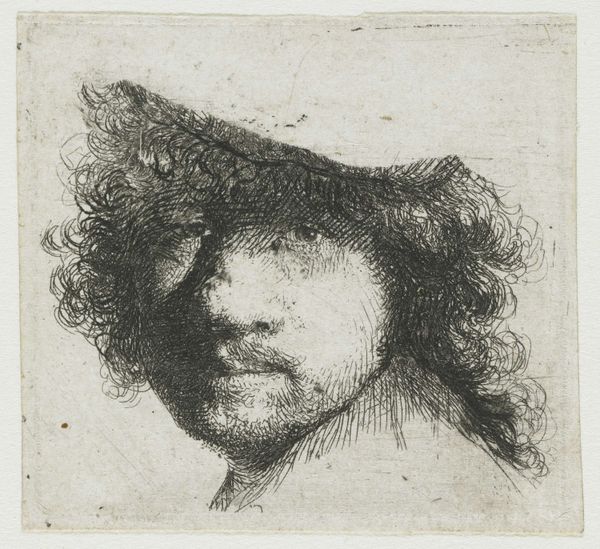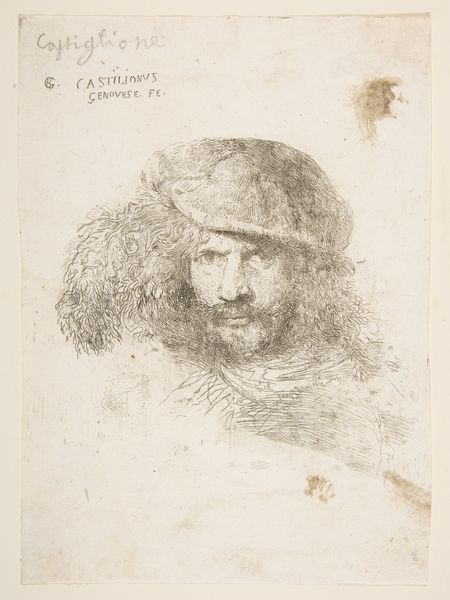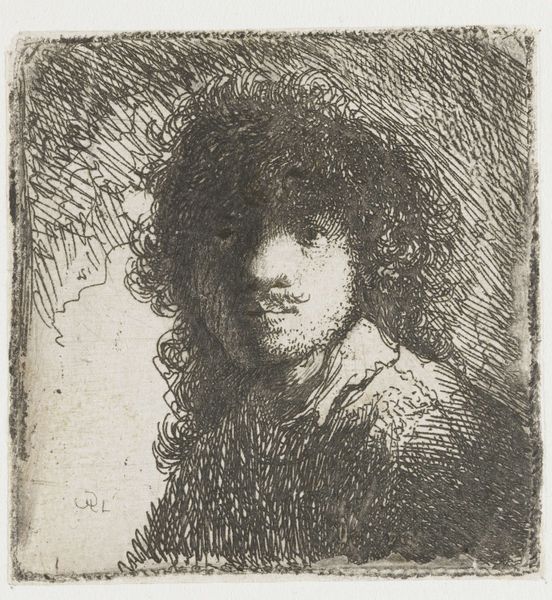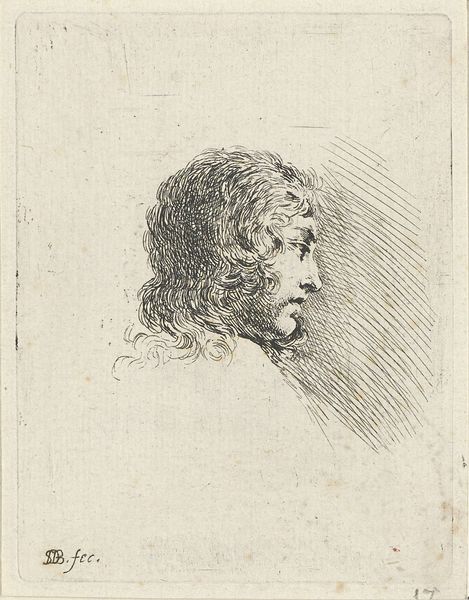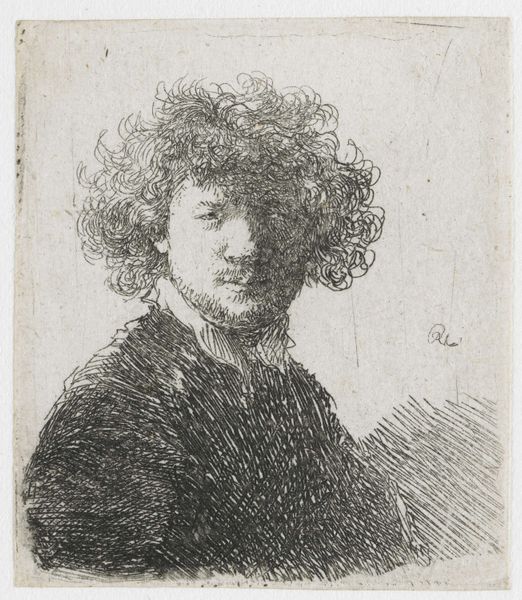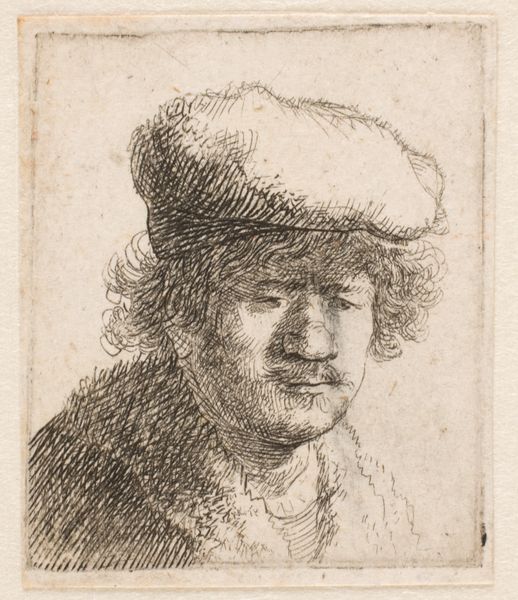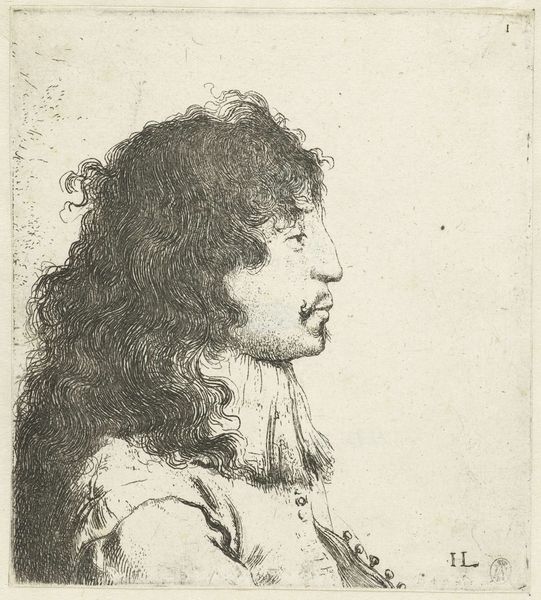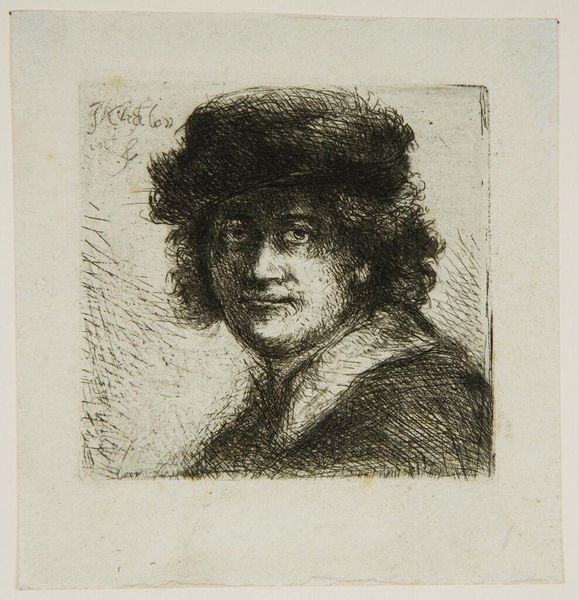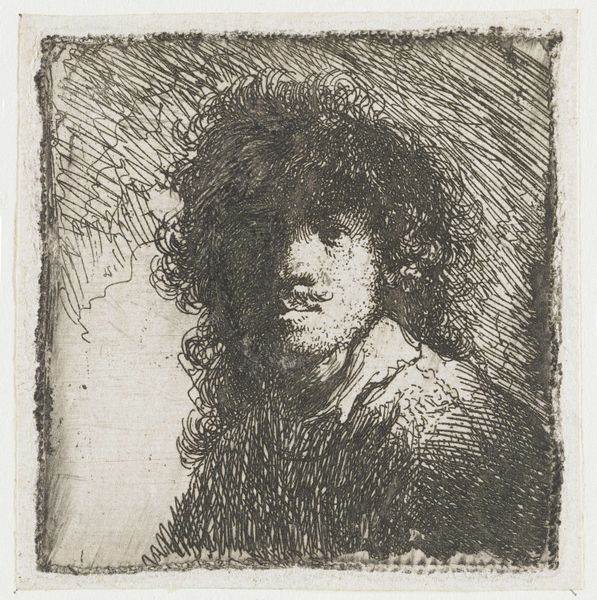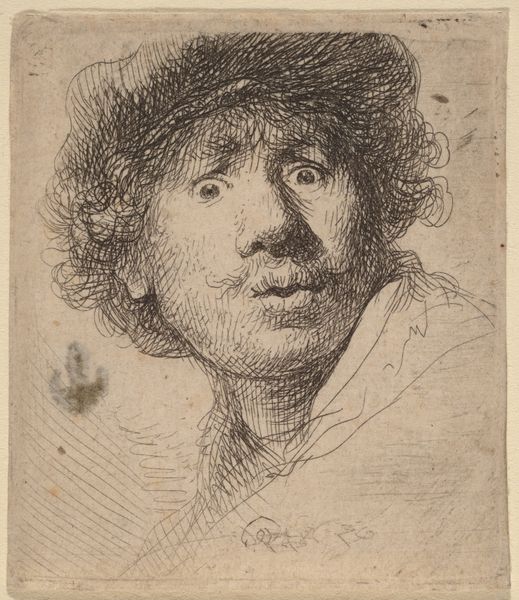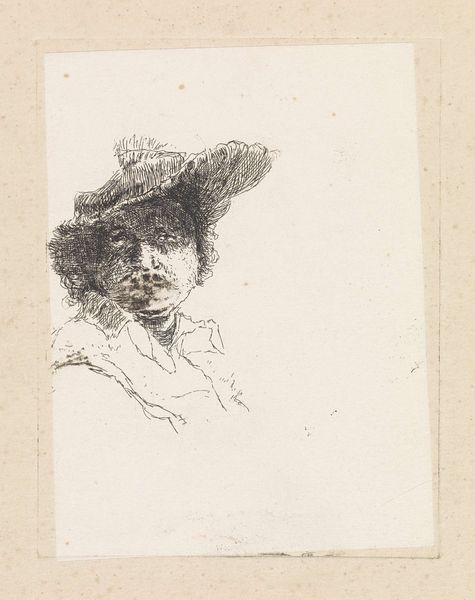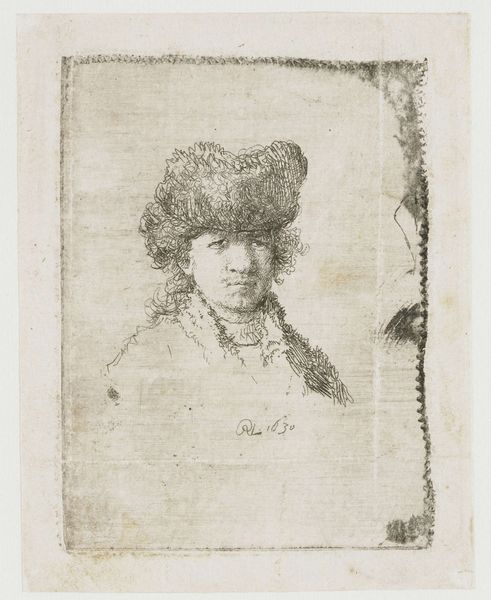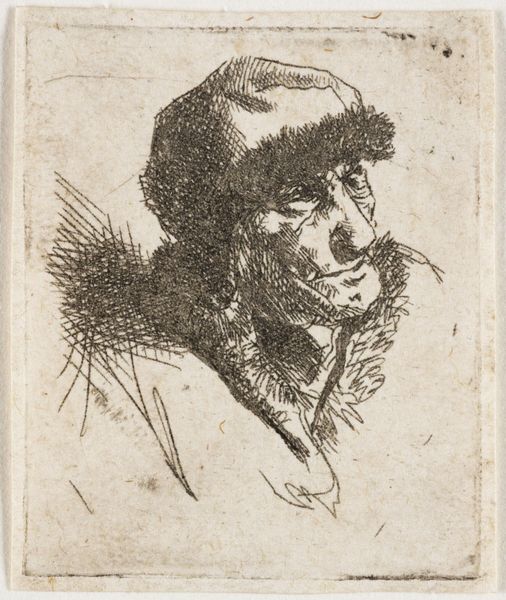
drawing, print, etching
#
portrait
#
drawing
#
self-portrait
#
baroque
#
dutch-golden-age
# print
#
etching
#
figuration
#
line
Copyright: Public Domain: Artvee
Curator: Here we have Rembrandt van Rijn's "Self Portrait," created around 1632. It’s an etching, a printmaking technique that allows for incredibly fine lines. Editor: Immediately striking, isn't it? Almost like a collection of fleeting thoughts captured on a single plate. The main portrait feels intensely personal, even vulnerable, set against these fainter, less defined sketches. Curator: The accessibility of printmaking democratized art, of course, but it also allowed artists like Rembrandt a unique level of experimentation that simply wasn’t possible with, say, a large commissioned history painting. Prints allowed for greater distribution, contributing to an artist’s fame and shaping public perceptions. Editor: I’m drawn to that asymmetry. One eye almost hidden in shadow, creating this immediate sense of intimacy while also, paradoxically, maintaining a kind of aloofness. It’s playing with the idea of self-representation itself, and it resonates with contemporary discussions about the fragmented nature of identity. We show only certain parts of ourselves. Curator: Absolutely. And remember, the self-portrait became a crucial tool for artists solidifying their brand in a burgeoning art market. Rembrandt knew the importance of controlling his image, how it circulated. The etched line itself is incredibly important, allowing for a certain degree of detail to show the artist's skillful hand. Editor: The shadow work emphasizes class politics, suggesting privilege but not completely committing to its definition. The self-awareness evident in the portrait really emphasizes a modern spirit and creates opportunities for accessible and important reflections on identity today. Curator: Thinking about art history now, this self-portrait feels very poignant, like a dialogue he began that continues centuries later. It represents just a fragment of his complex artistic contributions, even today. Editor: This work demonstrates his introspection, making it easy to relate with regardless of personal background, culture, or gender. A wonderful example of how the personal can illuminate shared experience.
Comments
No comments
Be the first to comment and join the conversation on the ultimate creative platform.
